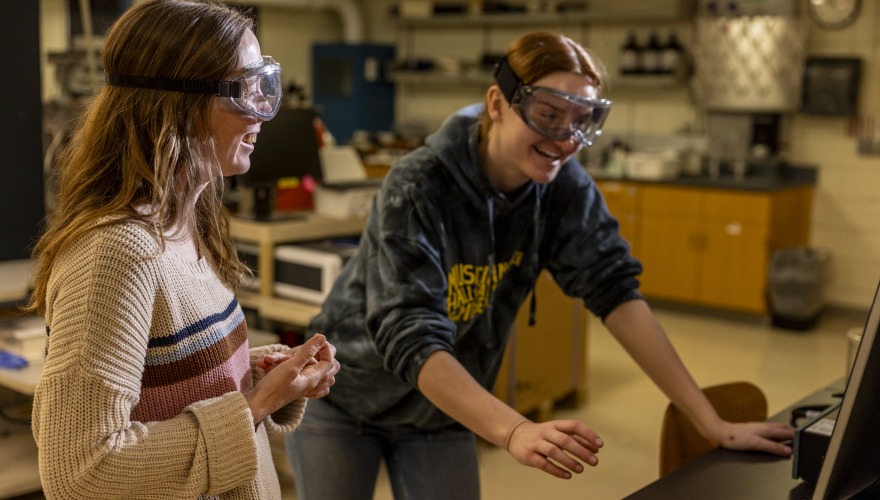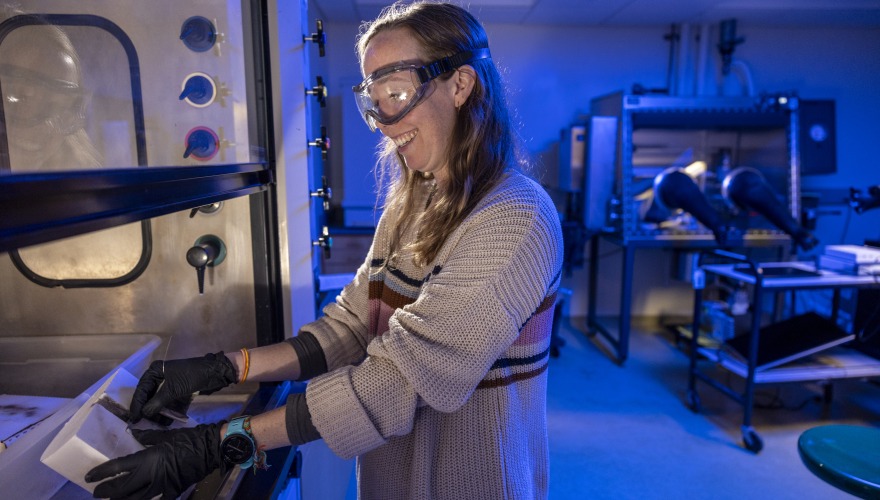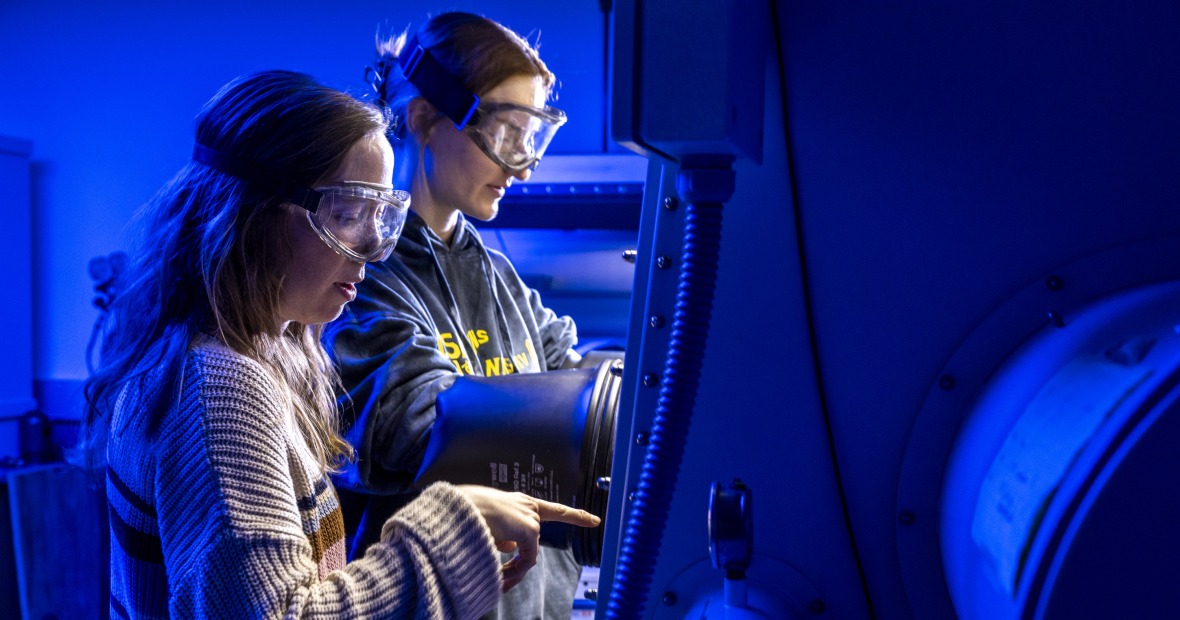MacInnes Explores Greener Frontiers with Electrochemistry
Molly MacInnes never planned to be an electrochemist — the field wasn’t even covered in the chemistry curriculum when she was an undergrad at Oberlin College.
MacInnes knew she wanted to use chemistry to find climate-forward solutions to global issues, but she thought she’d do so as a synthetic chemist. Then, an internship sparked her interest in solar cell technology.
MacInnes went on to study solar technology in graduate school at the University of Michigan. That solar research, it turned out, involved a lot of electrochemistry. “Electrochemistry is such a cool technique that I fell in love with it pretty quickly,” recalls MacInnes.
Electrochemistry uses electrical currents — rather than other chemicals — to add or remove electrons from atoms in reactions known as reduction and oxidation. Electrochemical techniques can be used for many purposes: to analyze the contents of compounds, to study degradation, or to purify or alter materials. Now an assistant professor of chemistry at Grinnell, MacInnes teaches these techniques to students in Instrumental and Analytical Chemistry courses.
Though she’s no longer developing solar cells, MacInnes is still using electrochemistry to fight for a cleaner, healthier Earth. “I try to find ways to apply it to environmental problems,” she says. At Grinnell, MacInnes is developing less environmentally harmful ways to purify critical compounds.
Finding Greener Alternatives
Currently, MacInnes is focused on the electrochemical purification of silicon.
As the name “Silicon Valley” might suggest, silicon is vital to the electronics industry and is used in computer chips, circuits, and transistors. Though abundant in nature as the primary component of sand, silicon is rarely found in a pure state. Instead, it takes the form of silicon dioxide (SiO2): a trio of one silicon atom and two oxygen atoms.
Existing industrial methods for purifying silicon dioxide are carbon intensive. The compound must be heated to temperatures above 1,800°C, a process that burns vast quantities of coal and creates high carbon emissions. MacInnes thinks that the reduction of silicon dioxide to silicon can be achieved in a less carbon-intensive way — an electrochemical way.
At the relatively low temperature of 800°C, scientists have found that silicon dioxide exposed to an electric current in a molten salt solvent can be reduced to silicon. MacInnes and her research students are working to refine this process, expand its utility, and understand why it works.

Tricky Research with a ‘DIY’ Twist
On paper, MacInnes’ experiments are straightforward. She wraps a piece of impure silicon — glass, essentially — in a graphite wire, then dips it into a container of molten calcium chloride salt held at 800°C. Finally, she inserts electrodes and runs an electric current through the solution. The silicon dioxide sheds oxygen atoms into the salt solution to become pure silicon. Simple, right? Not really, says MacInnes.
“The entire experiment is very sensitive to air and to water,” she explains. “If there’s too much oxygen in the environment, there is nowhere for the extra oxygen atoms to go.” Ideally, the salt will act as a solvent for the shed oxygen. But if the calcium chloride contains the tiniest bit of water, the experiment is ruined.
To eliminate as much oxygen in the environment as possible, MacInnes uses a specialized hood known as a “glovebox.” The tightly sealed container is filled with neutral argon gas instead of air to protect sensitive reactions from the environment. Clunky rubber gloves allow researchers to work with the materials placed inside the glovebox.
The challenges don’t end there. “No one else at Grinnell, or at most small colleges, really, does chemistry at such a high temperature,” MacInnes explains. “These unique conditions make for really interesting research, but it’s also a challenge.”
Last summer, MacInnes and Alexander Petroff ’25 spent almost a month building and testing a small ceramic furnace capable of heating an experiment to 800°C. Once they’d MacGyvered the furnace, they had to find a container that could withstand the heat but wouldn’t conduct electricity if touched by the electrodes. After considering lots of possibilities, MacInnes used a circular grinding saw to make her own “baskets” out of non-conductive magnesium.

‘It’s Just So Interesting’
MacInnes’ efforts to improve the purification reaction and expand it to other elements demand adaptability and creativity. “It’s slow progress, but it’s just so interesting,” she says.
Chemistry students certainly seem to think so: the project has captured the interest of several students — most recently Nicole Mlynski ’26. She began her Mentored Advanced Project (MAP) with MacInnes this semester and already navigates the glovebox with dexterity.
As they refine their process, MacInnes and her students will rely on Grinnell’s electron microscope and elemental analysis detector to analyze the purity and structural changes of the silicon samples.
“When we tweak the experiment and compare outcomes, we can learn why this process works the way it does,” says MacInnes. “The better we understand the science behind it, the more we can refine the process and make it a viable alternative for industrial use. And given the environmental impacts of the existing industrial process, the sooner the better.”

